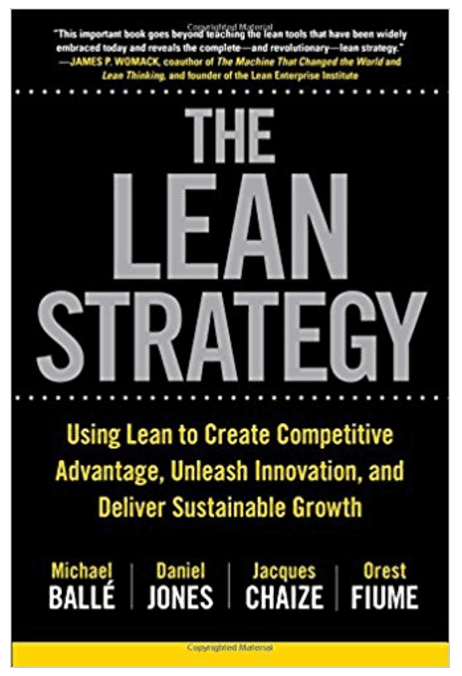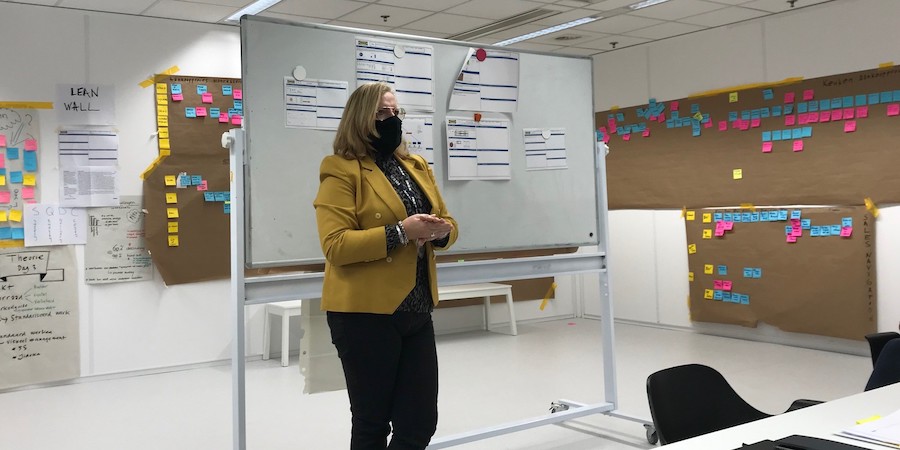
Lean as the management strategy of the future
FEATURE – Lean is a people-centric system for learning that acts as an alternative to traditional management and financial capitalism. It represents the best strategy a company can adopt to meet the needs of the future.
Words: Daniel T Jones, Chairman, Lean Enterprise Academy
Thirty years ago, Jim Womack and I uncovered a very different management system in Toyota. We called it “lean” to contrast it with the mass-production systems we saw in America and Europe. What struck us was its superior performance in designing and building cars and, more recently, its superior ability to scale up innovative new technologies – like hybrid and hydrogen-fueled cars – faster than the competition.
But what really inspired us and many others to study lean in more detail ever since is the fact that it is a truly people-centric system that engages the creativity of all employees, rather than treating them as commodities to be replaced as quickly as possible by low-cost labor or robots.
For us students of this game-changing way of managing began a long and eventful journey to understand what enables a lean system to deliver such superior results. At first, we focused on the tools that can be used to improve the work and create processes that flow; then we learned about a series of management techniques, such as daily management, hoshin planning and A3 problem solving. Over time, we have also seen how this set of tools and techniques work in all kinds of activities and industries, not just in car manufacturing.
What became apparent, however, is that simply implementing the tools – or blindly trying to copy Toyota – misses the point completely, and quickly runs into the sand. That’s why Jim Womack and I called our 1996 book Lean Thinking: our aim was to frame lean as an alternative way of managing, showing why there is more to it than just boards and 5s. Indeed, lean success depends on how these tools are used and on how we learn to change the way we think about working together through using them. A Toyota sensei (teacher) is not interested in the results of an A3 problem solving report, but in what was learned from going through this exercise.
Reusable learning from a succession of problem solving exercises builds the cumulative capabilities that enable teams to address tougher problems together in the future. Lean is all about acting our way to a new way of thinking – which in turn leads to a new way of acting. This is the basis of the dynamic gains that create the superior performance we see in truly lean organizations, and their ability to learn and respond more quickly to new opportunities and changing circumstances. Lean is, above all, a system for learning.
As our Lean Community developed, it also became very clear that active leadership from the top is essential for the success of any lean initiative. Seeing lean as another method for cutting costs in operations also misses the point and, as an approach, it rarely lasts. So, what is the journey leaders need to embark on to focus everyone on the key challenges facing their organizations, to support the learning and capability building to meet them, and to translate this learning into bottom-line results? Clearly, it is more than just problem solving.
Who better to answer this question than pioneering lean CEOs who have gone through several lean initiatives before realizing they needed to actively lead lean themselves to achieve results like Toyota? Art Byrne tells us how he did this in The Lean Turnaround, and the CEOs my co-authors (Michael Ballé, Jacques Chaize and Orry Fiume) and I have worked with do the same in The Lean Strategy.

Indeed, these leaders had to unlearn many of the things they were taught in business school and face up to the many obstacles of traditional management thinking, which include:
- The separation of strategy and execution. In 1980, Michael Porter insisted that leaders should focus on strategy and market positioning, and that execution is just about acquiring best-practice systems and lower-cost labor. Lean leaders reject this separation between strategy and execution, recognizing that lean capabilities can’t be bought – they are nurtured and grown over time.
- Managing by the numbers. It turns out that traditional financial accounting systems cannot see many of the problems or effectively track the improvements stemming from solving them. Lean capabilities improve physical processes and quality and free up capacity and cash, which executives can then turn them into growth and profits.
- Relying on processes and systems designed by experts results in middle managers simply focusing on ensuring compliance and leads to static optimization and no learning. Lean taps into the knowledge of those running each process, capturing and building on their improvements to create the next generation of products and processes.
- Silos and rule-based bureaucracy divert a lot of expensive executive time into fighting PowerPoint wars to defend silo budgets and optimize the activities of different business areas. Bureaucracy inherently resists change and hides problems to avoid blame. Lean reveals problems and builds horizontal cooperation along the flow of work creating customer value.
- Long lists of projects. Disengaged leaders who cannot see the underlying problems in their organizations invariably launch long lists of projects, hoping some of them will succeed. This results in overburden, failure to deliver and a great deal of wasted effort and capital. Lean builds a common understanding of the underlying gaps that need closing, and a way to focus efforts on the actions required to close them.
- Top-down decision-making. As a model, leaders defining the strategic problem, deciding on a plan of action, driving it through against resistance to change and dealing with the consequences is increasingly being questioned. Cognitive psychology reveals the fundamental flaws in jumping to a solution (see Daniel Kahneman’s Thinking Fast and Slow). It is also inherently wasteful, particularly in rapidly-changing times (Art Byrne - The Lean Post 8 August 2017). The military, too, recognizes that this approach to strategy is outdated – that “the best laid plans do not survive contact with the enemy” (Stephen Bungay - The Art of Action). So their focus now is on developing the skills of the front-line to do the right thing in the circumstances they encounter at the time – which they call “leading from the ground up”. This mirrors the lean approach to decision-making.
Lean can be seen as a series of counter-measures to address these obstacles. However, what brings them together and makes them effective is a different way of thinking and acting that leaders learn by improving their current activities rather than reaching for another big leap in the dark. It is an iterative personal learning journey that Toyota calls “problem awareness” and is a necessary counterpart to problem solving. It is almost always guided by an experienced sensei who leads, challenges and helps leaders to reflect on what they observe and do.
It can be summarized in four steps:

- Finding the right problems by going to the gemba to help front-line staff tackle the obstacles they face every day, in order to see the underlying problems and assumptions behind current processes and systems. In doing so, leaders not only signal support for learning and problem solving, but also their willingness to address the root causes that they have often been, maybe inadvertently, responsible for cresting. They also see more clearly what capabilities are needed to address them.
- Facing up to those problems involves taking a “helicopter view”, measuring their impact across the organization and being clear about the business case for taking action – how quality at source and faster time-to-market can grow sales; how faster flow can release cash; how the intensity of kaizen can lower cost and free up capacity for new products, saving capital. Leaders then set improvement directions, not plans, in a way that everyone can see how they can contribute to meeting them.
- Framing experiments and learning by seeing the Toyota Production System for what it actually is – a set of learning frames that reveal what it takes to create value for users, what it takes to do every step right-first-time, how to link them in a single-piece flow without batching, how to reveal problems through a pull system, and so on. Repeated reference to these learning frames is as important for leaders as it is for the front line.

- Forming solutions through repeated experiments to discover what works in a specific situation and capturing this knowledge in standards. But also building a learning infrastructure to support leaders at every level in deepening the reusable learning of the people working for them, rather than rolling out best practice. And establishing a chain of help rather than a chain of command – and a dialogue – to align activities with the chosen improvement directions.
Continuous learning also lays the foundation for continuous innovation, which translates into: scaling up existing designs rather than making big leaps; learning from a dialogue with key users; capturing learning from production and suppliers; and incorporating new technical opportunities at a faster rate than competitors. Key to managing this is seeing products as a stream of value with a takt time (rather than a series of projects) and developing the critical judgement of the Chief Engineers in defining the overall concept and deciding which changes are necessary and which are not for the next iteration.

Bringing all of this together demonstrates how a people-centric system like lean offers a promising alternative to financial capitalism. Its responsiveness and its ability to learn, create meaningful work for employees and minimize the impact on the environment represent the most coherent strategy a company can adopt to meet the needs of our time. Our challenge is to build on the shoulders of the pioneers in articulating this strategic approach for the managers of the future.
Join Dan Jones, John Shook and many others in Venice in October at the European Lean Summit.
PL readers get 5% discount!

THE AUTHOR

Professor Daniel T Jones is co-author of the seminal books The Machine that Changed the World, Lean Thinking and Lean Solutions; and co-founder of the lean movement. His latest book (co-authored with Michael Ballé, Jacques Chaize and Orry Fiume) - The Lean Strategy - is available here. Dan is founding chair of the Lean Enterprise Academy in the UK.
Read more


INTERVIEW – At the recent Lean Transformation Summit in New Orleans, we sat down with Richard Sheridan of Menlo Innovations to discuss the ground-breaking concept of joy in the workplace.


GETTING TO KNOW US – It’s easy to over-complicate lean thinking. This month’s Lean Global Network interviewee tells us why we should always start with the work and the people doing it.


FEATURE – The author discusses the most common mistakes leaders make during gemba walks and the things they need to keep in mind to make the most of this important management practice.


FEATURE – A former ops manager now tasked for improvement across IKEA looks back at what she learned in one of the company’s stores and explains how she hopes to take lean to the whole group.

